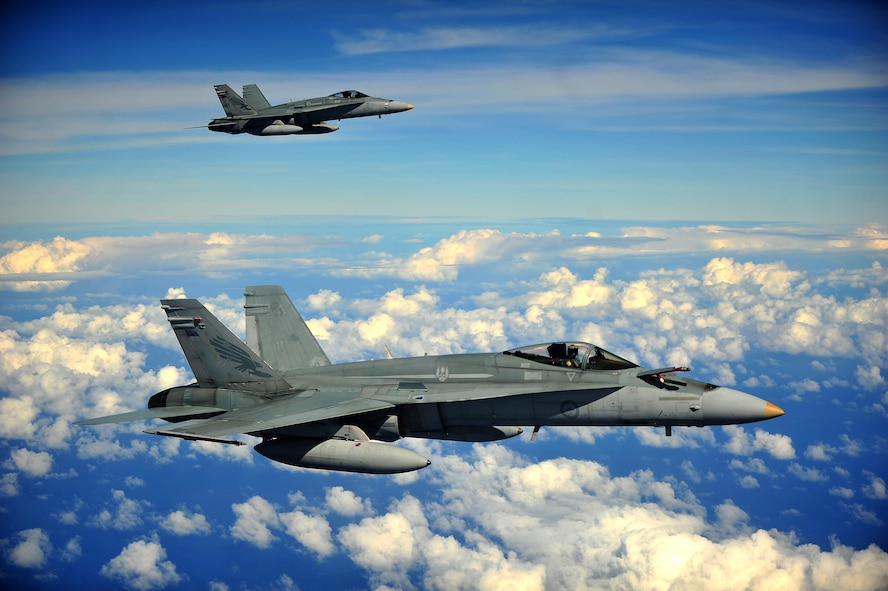By Master Sgt. Matthew McGovern, Pacific Air Forces Public Affairs
JOINT BASE PEARL HARBOR-HICKAM, Hawaii (AFNS) --
Throughout fiscal 2013, the key aspect of Pacific Air Forces was
engagement as more than 45,000 Pacific Air Forces Airmen conducted a
broad spectrum of operations, from humanitarian relief to decisive
combat employment, in an area covering 13 time zones and 100 million
square miles.
These operations began with the inactivation of 13th Air Force and the
operationalization of the Headquarters PACAF Staff, as the Air Force
established its benchmark component major command (C-MAJCOM). This
unified structure gives PACAF dual focus: support to an operationalized
staff across the range of military operations and performance of
mandated duties of organizing, training, and equipping Airmen.
Throughout the year, PACAF Airmen expanded engagements, increased combat
capability and improved warfighter integration by participating in more
than 25 exercises and humanitarian operations throughout the region.
"Engagement is something we are doing every day across the Asia-Pacific
region," said Gen. Hawk Carlisle, commander of Pacific Air Forces. "I
cannot overstate the importance of working with our allies, partners and
the international community to deter aggression and to maintain peace
and stability in the region."
Operation Pacific Angel is an example of PACAF's expanded engagements,
as more than 275 PACAF Airmen and joint service members joined host
nation military and civilian forces, multilateral military, and
non-governmental organizations in Cambodia, Indonesia, the Philippines,
Sri Lanka, and Vietnam to promote regional humanitarian assistance and
disaster relief interoperability.
The PACANGEL engagements included medical, dental, optometry, and
engineering programs, as well as various subject-matter expert
exchanges. More than 22,000 total patients were cared for in these
countries and 15 structures such as schools or medical clinics were
built or refurbished during these operations.
"Partnering in operations such as Pacific Angel enhances our ability to
work together and effectively respond to humanitarian disaster relief
and international peacekeeping operations," said Lt. Col. Keith Gibson,
commander of Pacific Angel 13-2, from Joint Base Pearl Harbor-Hickam.
Increased combat capability was another focus this year, as exercises
such as Red Flag Alaska involved more than 110 aircraft and the
participation of more than 5,200 personnel from the U.S. Air Force
active duty, Reserve and Air National Guard, U.S. Army, U.S. Navy and
Marines, Singapore, Australia, Japan, and the Republic of Korea. Three
Red Flag multinational exercises occurred this year. The two week-long
tactical air combat exercises replicated the stress warfighters face
during their first 10 combat sorties of a conflict.
Expanding engagements as well as theatre security cooperation was also
evident in early February as Cope North was in full swing. Participants
from the U.S. Air Force, the Japan Air Self Defense Force and the Royal
Australian Air Force focused on Large Force Employment scenarios, which
enhanced the interoperability of 15 different airframes.
"During Cope North, we are able to facilitate an environment, in
coordination with our international partners, which allows us to share
information to decision makers," said Lt. Col. Michael Erickson, 962d
Airborne Air Control Squadron commander. "This provides those on the
ground and in the air the best possible situational awareness."
Besides exercises, multi-national leadership visits and exchanges also
increased the situational awareness and solidified partnerships. Lt.
Gen. Cha-Kyu Choi, Republic of Korea, Air Force Vice Chief of Staff,
visited PACAF headquarters in November to discuss ways to further
improve support and cooperation between our nations' air forces.
Another significant meeting was the first-ever Medical Acupuncture and
Battlefield Medicine Subject Matter Expert Exchange in Beijing, China
Oct. 21-27. U.S. Air Force medical physicians attended at the invitation
of China's People Liberation Army to help U.S.-China militaries
increase mutual trust and understanding while sharing practices in
traditional Chinese medicine.
In addition, General Carlisle hosted a 14-member Chinese People's
Liberation Army of China delegation as part of an agreed upon reciprocal
visit between Chinese and American military officers. During their
visit, the Chinese officers received a briefing from General Carlisle on
PACAF's priorities, and toured a C-17 Globemaster III.
The year closed with General Carlisle representing PACAF along with Air
Force Chief of Staff Gen. Mark A. Welsh III, meeting with People's
Liberation Army Air Force Deputy Chief of Staff Maj. Gen. Li Chunchao,
in Beijing, China, Sept. 24. The U.S. Air Force leaders visited with
various military leaders in China as well as tour the Chinese Air Force
Aviation Medicine Research Institute as part of a weeklong trip.
Working with our allies and partners to expand engagement is crucial to
PACAF's responsibilities in the Department of Defense's largest area of
responsibility.
Throughout this past fiscal year and into the next, PACAF has and will
continue to work together with established allies and partners, to help
build their confidence, improve combined interoperability, disrupt
proliferation and provocations, and solidify joint access during
contingencies and/or for throughput to critical locations across the
Asia-Pacific region.
Friday, October 18, 2013
Subscribe to:
Post Comments (Atom)








No comments:
Post a Comment